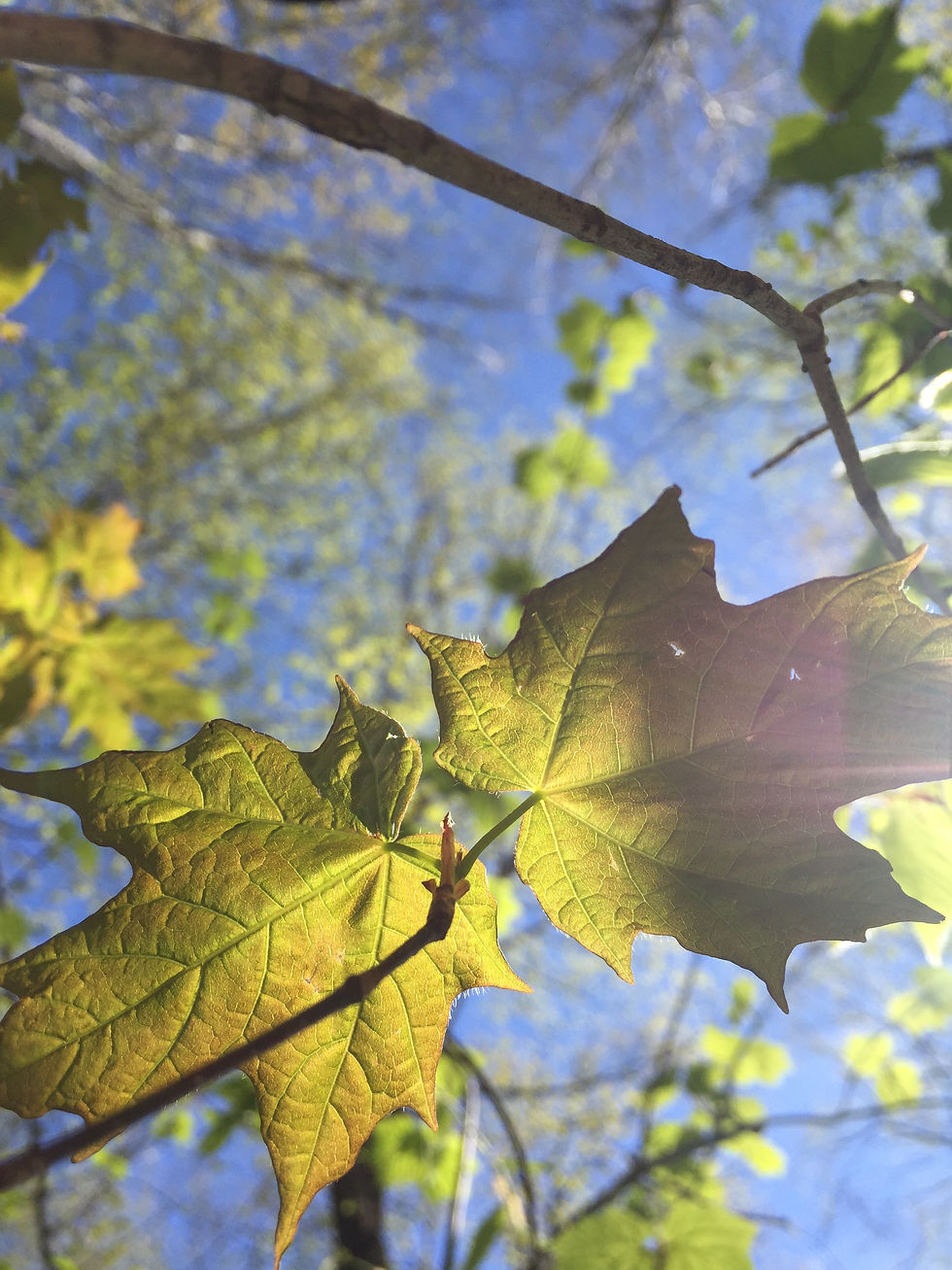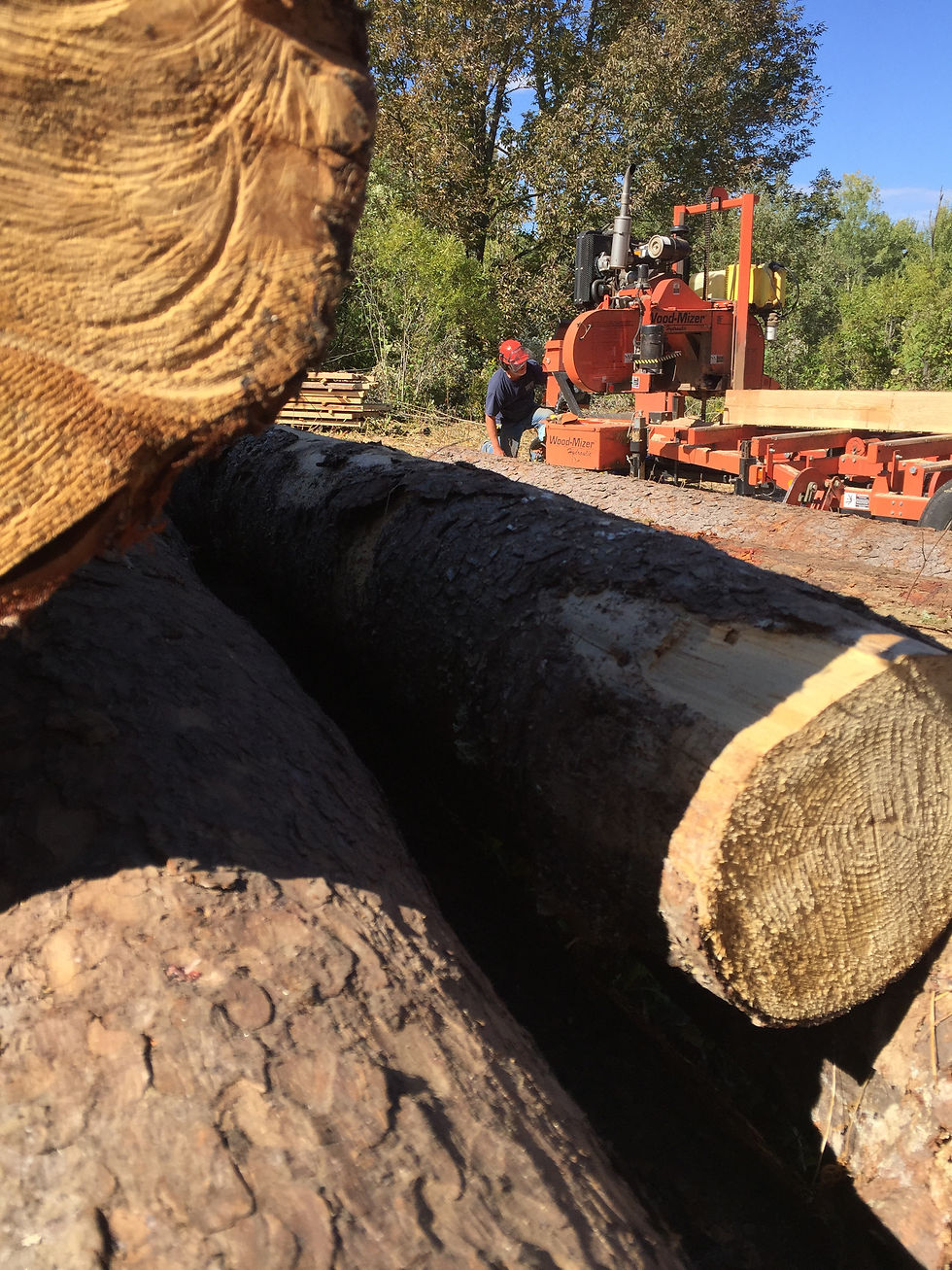The Woods Life
- Allan Thompson

- Sep 21, 2020
- 4 min read
This article first appeared in the Vermont Woodlands Association September 2020 newsletter.
The Woods Life
By Allan Thompson
I strive for a healthy woods life. A life based in, and benefiting from, the woods. Healthy woods. Vermont Woodlands Association strives for a good woods life for all of its members. My woods life is going to be different from your woods life, but there is common ground that I think we can work with.

There are two complex, parallel ideas in my woods life. One is a tangible one: more utilitarian. This idea is that trees offer valuable resources, and many eventually will be cut to serve those resources. In my own life, the closest examples are firewood to heat my home and lumber for structures.
The other idea is the more intangible one and is also more difficult to articulate. It is more of an IDEAL. This ideal comes from woodland experiences that excite the senses and create this intangible appreciation for the woodlands and woodland life. When we hear the sounds of the first spring hermit thrush, or in the fall when leaves collect at our ankles, we’re experiencing life in the forest through distinct observations and interactions. Collectively, this creates an awareness and appreciation of life around us, seemingly without us, emanating from and in a wild and natural state. These are things that I crave every time I enter the woods. And, likely, you do, too.
The contradictions of these ideals are difficult to untangle. The idea that forests, sometimes even a single tree, can both provide utilitarian values and these natural experiences is often where our common ground breaks down. The utilitarian instinct to harvest wood is difficult to realize if we’re protecting every piece of forest life and function. Similarly, it is difficult to appreciate forest life if the most conspicuous parts, the trees, are removed. They often come to a head when a forest that we appreciated for its “natural state” undergoes a harvest and the very conditions that we appreciated are no longer present. The shade, the unbroken green, the symmetry of trees and canopies. Gone … or at least temporarily changed.
However, my perspective is that these ideals are not in contrast to each other. Rather, the common ground still holds strong. These complex forest ideals co-exist, sharing a mutualistic relationship. When I see a spruce leader with twice the growth in the new sunlight than the previous years where it struggled under the shading suppression of a split stem red maple, I celebrate the invigorated life of the spruce, the now-gone life of the red maple, and the anticipation of warming by the winter’s fire. I also celebrate the work: the labor and fruits of the cutting. And I celebrate the recognition of forest life and the very, very humble position to have to choose to kill a tree for the life it gives me. And in truth, I’m glad it’s me.

Forest utilization requires a land ethic that values forest life and, through thoughtful forest management, preserves the ability for that forest to persist. Without it, our forest resources degrade and eventually are gone. We also live in a state, a society, where forest products are a part of our culture, and wood utilization is inevitable. In many areas, it is the very idea of utilization that keeps forests as forests while being able to provide economic benefits and materials for their communities and protecting the very forest ecosystem we hope to protect. So, the land ethic also must include the assumption that resource use, that is, woodland management and logging, is inevitable, appreciated, and an integral part of our woods life.
You don’t have to be a landowner or have a specialized understanding of our natural world to practice an ethic that celebrates a healthy woods life. This complex land ethic can be practiced by each of us so that it permeates into our natural resource protection, education, woodland management, cultural appreciation for woodland workers, as well as the state policies and organizations that we support.
Over the last few years as a member, board member, and, now, Interim President of Vermont Woodlands Association, I recognize that this is where, as an organization, we play best. We’re working to keep members informed through our ongoing webinars, advocating for wildlife and habitats through our Woods, Wildlife and Warblers program, keeping you up-to-date with legislative activities, participating in policy discussions, participating in Forest Industry networks, promoting long-term planning with our Land Succession programs, and our WOW initiative, empowering women as woodland owners. Throughout all of this work, we’re promoting this woodland ethic – a woods life that recognizes our role in our woodland world. That we are not apart from it but rather willful players IN it. Vermont Woodlands Association hopes to not only support willful players but also create skillful woodland players for the collective benefit of our healthy woods life ... so that when complex and the very humbling decisions that relate to our woods are required to be made by someone, I’ll be glad that it’s you.
Thank you to all our members for your continued support.



Comments